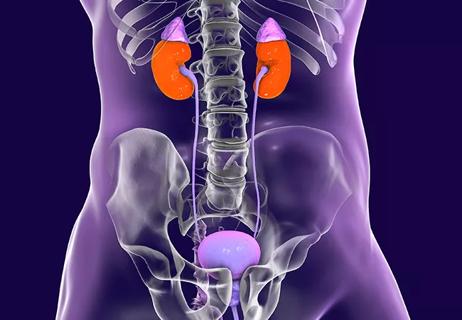Supporting birthing patients through newer tools and strategies

From 1987 to 2019, pregnancy-related deaths in the United States went from 7.2 to 17.6 per 100,000 live births1, and severe hemorrhage is a leading factor in maternal mortality.
Advertisement
Cleveland Clinic is a non-profit academic medical center. Advertising on our site helps support our mission. We do not endorse non-Cleveland Clinic products or services. Policy
In addition to utilizing time-tested treatments to reduce risks for postpartum hemorrhage (PPH), Cleveland Clinic obstetrician/gynecologists are embracing newer solutions that aim to avoid the condition when possible and address it more quickly and effectively when it occurs.
As of 2017, the American College of Obstetrics and Gynecology defines PPH as more than 1,000 mL blood loss within 24 hours of the birth process, regardless of the mode of delivery, or blood loss accompanied by the signs and symptoms of hypovolemia.
The incidence is of PPH is about 3% to 4%, says Cleveland Clinic researcher and maternal-fetal medicine specialist Edward Chien, MD. An estimated one in 100 women with excessive bleeding require transfusion.
A variety of factors can increase PPH risk, including anemia, obesity, preeclampsia, placental anomalies, uterine overdistention, and certain labor and delivery factors, including prolonged labor and perineal lacerations. About 40% of hemorrhages take place in women who have no risk factors.
Four new approaches are helping Cleveland Clinic doctors support their pregnant and birthing patients, says Dr. Chien.
Aggressive management of anemia is one important measure Cleveland Clinic uses to prevent PPH. The health system has established an order set to ensure pregnant patients with anemia are optimized before labor and delivery.
Standard practice has long been to prescribe prenatal vitamins at the start of pregnancy, but many people experience constipation and GI irritation with the oral form of iron and stop taking it. “We typically assess anemia at 24 to 28 weeks,” says Dr. Chien. “If we don’t see a response to oral iron we will initiate iron infusions. Our Chronic Disease Management group helps with the anemia management in these patients.”
Advertisement
Cleveland Clinic also recently established the Center for Complex Surgical Obstetrics, through which a team of subspecialists plan surgical care for patients with placenta accreta or a history of abdominal surgeries that can raise risks for labor and delivery.
“When people who have had multiple prior C-sections, the risk of the placenta implanting abnormally the uterus is greater,” says Dr. Chien. “It can go all the way through the uterus and into other organs. It often results in significant hemorrhage at the time of a subsequent C-section. Programs that address placenta accreta has been shown to improve outcomes.”
Patients served by the center have their care and delivery coordinated by a team that includes gynecologic oncologists, who serve as the surgical expert; urologists; obstetric anesthesiologists and neonatologists.
When PPH does not respond to first-line treatments, uterine tamponade may be the next step. The JADA system, approved by the U.S. Food and Drug Administration in 2020, is a novel tamponade that uses vacuum compression rather than uterine expansion to quickly stop hemorrhage in cases of atony.
“Other than lacerations, uterine atony (poor contraction of the uterus) is the most common cause for bleeding,” says Dr. Chien. He participated in the nearly two-year, multi-centered study of JADA that preceded FDA approval.
The tool is inserted into the uterus and connected to a source to deliver low-level suction, causing the uterus to collapse, and closing off myometrial blood vessels. In trials, the treatment succeeded in 94% of 106 patients who received it.
Advertisement
“The data indicate it’s a cost-effective tool,” says Dr Chien. “It starts to work very quickly, within about three minutes. I think most people who have experience with it find it more useful than traditional balloon compression devices.”
Tranexamic acid also is being used to reduce blood loss. It has been traditionally used for trauma and heavy menstrual bleeding, but it also can reduce the need for transfusion in obstetric bleeding. It appears to be most effective for active bleeding but hasn’t been as effective as preventive therapy.
Given the increased incidence of PPD and the severity of the condition, it is crucial for clinicians to stay aware of evolving, evidence-based tools. Continuous improvement in prevention and management of hemorrhage will be required to improve the odds for individual patients and change the direction of the trendline.
Notes
1. U.S. Centers for Disease Control and Prevention’s Pregnancy Mortality Surveillance System.
Advertisement
Advertisement

Findings underscore the value of clinical monitoring in pregnant patients using SSRIs and SNRIs

Study explores role of single-dose drug in fostering the mother-infant dyad

Multidisciplinary approach starts with early and regular screenings

New care path supports obstetric patients with bladder dysfunction

Outcomes from a registry study reveal why closer monitoring may be warranted during the postpartum period

Prescribing eye drops is complicated by unknown risk of fetotoxicity and lack of clinical evidence

Rare pregnancy complication can lead to fetal demise

Research may offer family-planning insights for those with the condition